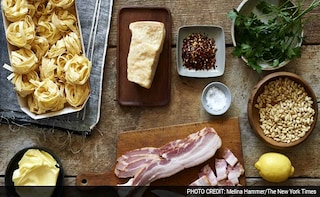When I cooked only to please myself and one or two other consenting adults, choosing recipes was a breeze. Nothing was off limits. Dishes with olives, stinky cheeses, bitter greens and mushrooms — sometimes all of the above — were on regular rotation. Then I began cooking for kids (picky, omnivorous and otherwise). With them came their nut-allergic friends, vegan guitar teachers and chili-fearing in-laws. Forced to adapt my NC-17 cooking style to a G-rated audience, I paged through cookbooks in search of “crowd pleasers” that proved elusive.
Advertisement
Advertisement
Advertisement
Advertisement
For the latest food news, health tips and recipes, like us on Facebook or follow us on Twitter and YouTube.
Advertisement
Tags:
